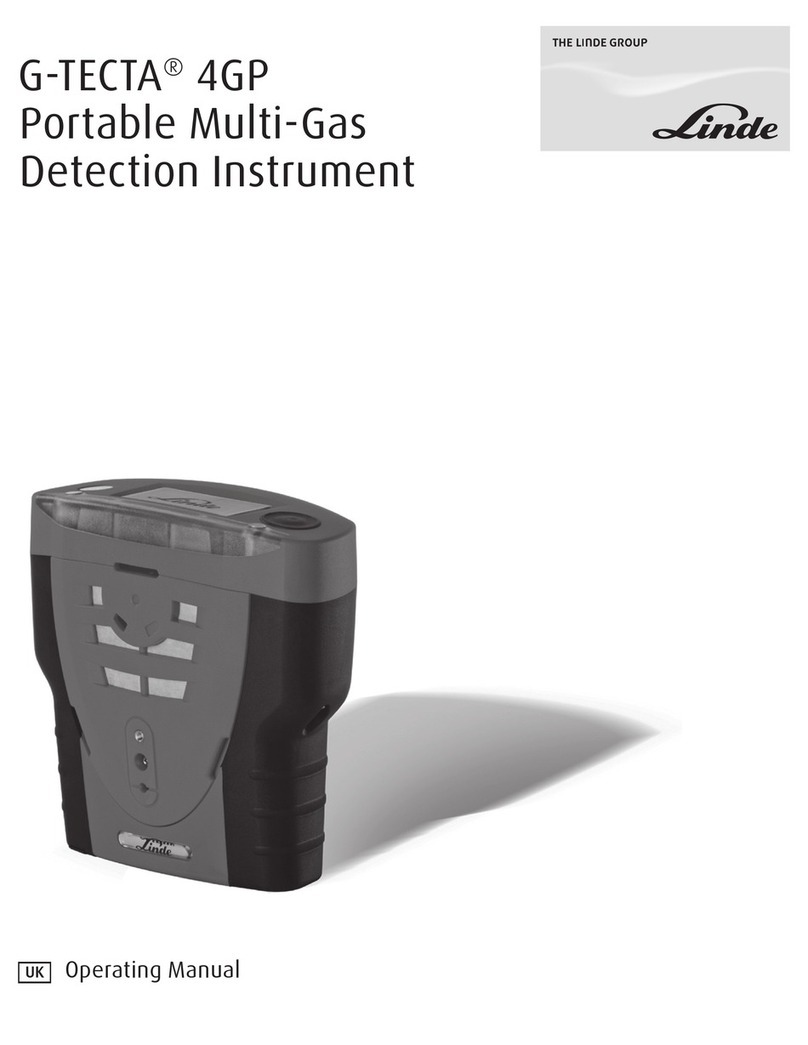5
G-TECTA® 4G Multi-Gas
Detection Instrument
Introduction
G-TECTA® 4G is a premium, portable Multi-Gas
Detection Instrument, designed to be carried
or worn by individuals working in potentially
hazardous environments such as confined spaces.
G-TECTA® 4G is certified for use in classified
hazardous areas and monitors up to four different
gases by displaying the readings simultaneously
on the instrument screen. Alarm warnings are
transmitted by means of a loud audible alarm,
a bright visual alarm of blue/red flashing LEDs
and an internal vibrating alarm.
Sensors
G-TECTA® 4G can be specified with a wide range
of intelligent gas sensors. The sensor is fitted to
an intelligent processor which contains calibration
and sensor information. The G-TECTA® 4G can be
reconfigured at any time by replacing the pre-
calibrated intelligent sensor(s) with alternative
gas types. Sensors should be replaced by trained
service personnel and are easy to fit using “plug
and play” technology. The intelligent sensor(s) are
immediately recognised by the instrument and are
ready to use after instrument calibration.
Key Features
G-TECTA® 4G has been designed to be a reliable
and robust personal monitoring system, whilst
being compact, light and easy to use. The
instrument is water and dust tight to IP65 and
IP67 ratings. The G-TECTA® 4G’s shape and
design ensures high levels of user comfort and
minimal interference with the user’s normal work
function. The non-slip grip and alligator clip ensure
secure handling and wear ability and additional
accessories such as shoulder straps and chest
harness allow flexible wearing options if desired.
The G-TECTA® 4G has a single mode button and a
high quality display with automatic backlight. The
instrument continuously monitors the gas level in
the environment providing current, peak, and time
weighted average (TWA) readings for the user.
The G-TECTA® 4G can be configured by utilising
Linde G-TECTA® PC software. Data and event
logging can also be downloaded and managed
whilst the instrument is being charged via the
optional charger with communication link.
Software
The instrument software has been written in
accordance with IEC 61508 to ensure quality and
integrity in operation. The internal circuitry monitors
for any malfunction and will display an error
warning to the user in the unlikely event they occur.
Batteries
G-TECTA® 4G is battery operated and is supplied
with a Lithium-Ion battery pack.
Battery Check
G-TECTA® 4G should arrive with sufficient charge
so that the instrument can be used straight out the
box. However, to attain the full operating time you
should charge the battery. (The actual operating
time will depend on the types of sensor installed.)
The G-TECTA® 4G will operate for at least 16 hours
on a fully charged battery.




























